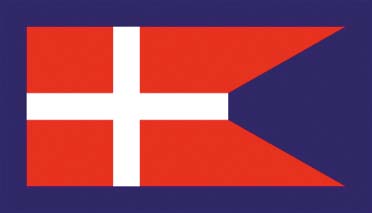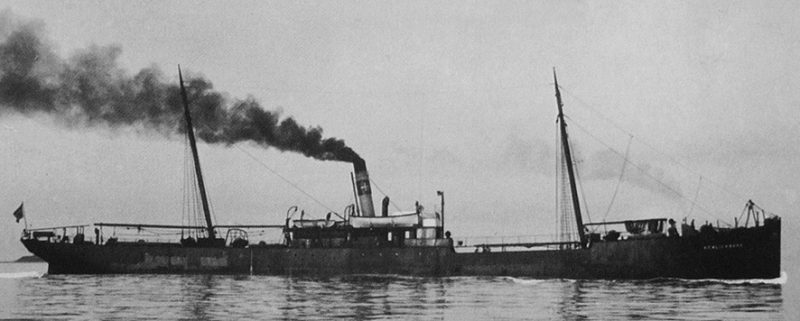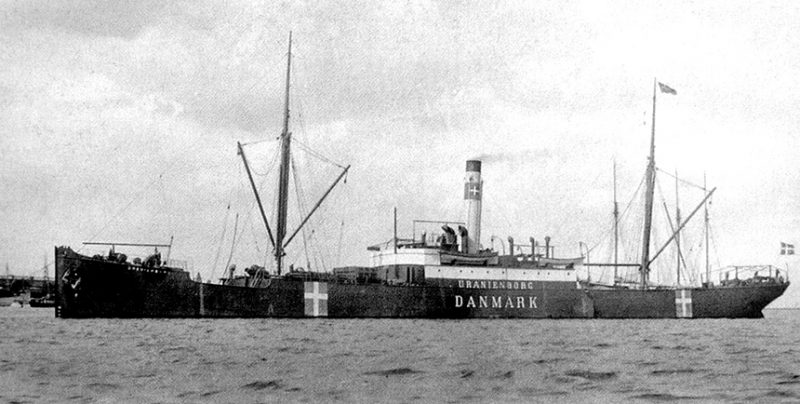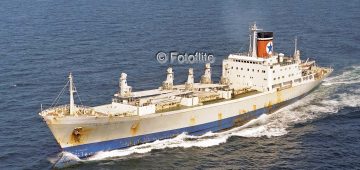130 Years of Tramp Shipowning

![]() The Dannebrog Group of shipping companies is a long established tramp shipping group, which today operates Nordana Line dry cargo and heavy lift services from the Mediterranean to Caribbean and U.S. ports, and its tankers in a joint venture with Stena Bulk of Sweden from offices in Copenhagen, Houston and Singapore. There are also heavy lift vessels operating worldwide in the project cargo trades for Nordana Line Project and Chartering, and a joint venture with Indonesian palm oil producer Golden Agri-Resources (GAR) operating with specialist palm oil tankers, and a new bulk shipping enterprise.
The Dannebrog Group of shipping companies is a long established tramp shipping group, which today operates Nordana Line dry cargo and heavy lift services from the Mediterranean to Caribbean and U.S. ports, and its tankers in a joint venture with Stena Bulk of Sweden from offices in Copenhagen, Houston and Singapore. There are also heavy lift vessels operating worldwide in the project cargo trades for Nordana Line Project and Chartering, and a joint venture with Indonesian palm oil producer Golden Agri-Resources (GAR) operating with specialist palm oil tankers, and a new bulk shipping enterprise.
The company has used a nomenclature of castles and palaces ending in ‘borg’ e.g. Amalienborg royal palace in the Nyhavn area of Copenhagen. This palace is still lived in by the Queen of Denmark, and is actually one of four buildings that were built on this site for the wealthiest merchants of Copenhagen. The Danish royal family moved here after their earlier palace in Slotsholmen burnt down. Amalienborg has a magnificent four storey facade with a columned projecting portico flying the Danish national flag (known as the ‘Dannebrog’) at its top. Christiansborg palace in Slotsholmen dates from the early 20th century, but there have been palaces and castles on this site since 1147, and twice burnt down in 1796 and 1884. Charlottenborg mansion house fronts Kongens Nytorv in Copenhagen and was completed in 1683 as a royal palace, but since 1754 has housed the Kongelige Kunstakademi featuring modern art by Danish and international artists.


Early History
The first half of this long period of tramp shipping was operated in the traditional deep sea tramping trades with steam and motor tramps in the 5,000 to 8,000 dwt range. Tramping around the world in stout steam tramps was a very good way to earn good freight rates as well as for officers and crew to see the world, unlike cargo ships on liner voyages that always repeated the same sequence of ports. The bright Dannebrog funnel colours feature the ‘Dannebrog’, and were seen on tramps carrying cement in wooden barrels from Norre Sundby or Aalborg or paper from Norrkoping to American ports, sugar from Havana in Cuba or Port Louis in Mauritius via the Cape to Europe, coal from the Tyne to the Plate returning with grain from Rosario, iron ore from Narvik or Lulea to German and British blast furnaces, or coal from Durban to the whaling station on South Georgia. Round the World voyages lasting up to a year were very rewarding and, for example, visited grain ports in the Black Sea, then loaded tea in Colombo or rice, tapioca and teak wood in Rangoon for Japan, and then ballast to load phosphates on Ocean Island or Nauru in the Pacific to return to Denmark via the Panama Canal. A liner service known as the ‘Baltica Sud Americana Line’ was operated by Dannebrog between 1920 and 1924 from Scandinavian ports to South America, as well as a ‘cross trader’ service between North American and South American ports.

Subscribe today to read the full article!
Simply click below to subscribe and not only read the full article instantly, but gain unparalleled access to the specialist magazine for shipping enthusiasts.



Comments
Sorry, comments are closed for this item